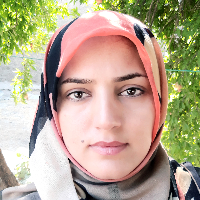Simulation of drainage impact on lowering the water level of Farrokhabad plain, Dehloran
In countries such as Iran that are facing a shortage of water resources, paying attention to all water resources is of the utmost importance. Until recently, drainage management had received less attention and more drainage research focused on design issues. Following the 1992 World Summits, the International Committee on Irrigation and Drainage focused its attention on drainage management and emphasized the conservation and use of fresh-water resources in the context of comprehensive water management. Many studies have been conducted about the effects of high water levels in different aquifers. The study of the role and seasonal contribution of the drain in the hydrology of the region (King et al., 2014.) is among these studies. Nowadays, the underground drain is used to lower the water level. Among the studies in this regard, the effect of drainage system on lowering of groundwater level of Shiraz plain using groundwater model by Karimipour et al can be mentioned. (2012).
Farrokhabad plain in Dehloran is classified as folded Zagros based on the division of Iranian building units (Nabavi, 1977). Shallow water levels in the village of Farrokhabad (five kilometers southwest of Dehloran) have caused problems for the inhabitants of the village, demanding the village to move to other areas. In this study, the use of drainage system for lowering groundwater level of Farrokhabad plain is evaluated. In this regard, the hydraulic behavior of the aquifer of Farrokhabad plain was modeled using Visual MODFLOW code. After calibration and validation, the model of impact of drainage system on groundwater status of Dehloran plain was simulated under three different scenarios. Scenario One: Lowering the plain water level by underground drainage in dry, wet and normal hydrological conditions for a five-year period. Scenario 2: Lowering the plain water level by using pumping wells in dry, wet and normal hydrological conditions for a five-year period. Scenario 3: Water table drop in different hydrological periods without drainage.
The drainage system used in the first scenario includes a combination of the main collection drains with the gradient at the point of the Meymah River, where drainage discharges. Due to the curves of the water table level in the drainage range, the water level drop over five years in dry climatic conditions is about two to four meters, in wet hydrological conditions four to five meters, and in normal hydrological conditions. There are four to five meters of drainage area available. Then, a series of pumping wells were used to lower the water level, considering the potential curves in the range of pumping wells in arid climatic conditions, with a water level of about three to five meters during the normal five years. In five-year period with wet hydrological conditions, three to five and a half meters drop and in dry hydrological conditions a drop of three to five meters in the range of pumping wells were observed.
The results of the potential curves show better performance of wells than in the drain. However considering that the wells should be made to remove the water collected in them as well as transporting the water to other places, it requires more expenditures to drop the water level in this area. But with the proper design of the underground drain network, water can be transferred with gravity force to the Meymah river, and only the initial expenditure of the drainage is required. Though, with the proper design of the underground drainages, and the use of a layer of sand and coarse aggregate particles over the main branches of the drain can be used for several years. So with regard to the mentioned cases, it is more suitable to study the design of underground drainage wells. To lower the groundwater level to the desired depth, sub-drainage networks should be implemented in the direction of the land slope.
- حق عضویت دریافتی صرف حمایت از نشریات عضو و نگهداری، تکمیل و توسعه مگیران میشود.
- پرداخت حق اشتراک و دانلود مقالات اجازه بازنشر آن در سایر رسانههای چاپی و دیجیتال را به کاربر نمیدهد.




